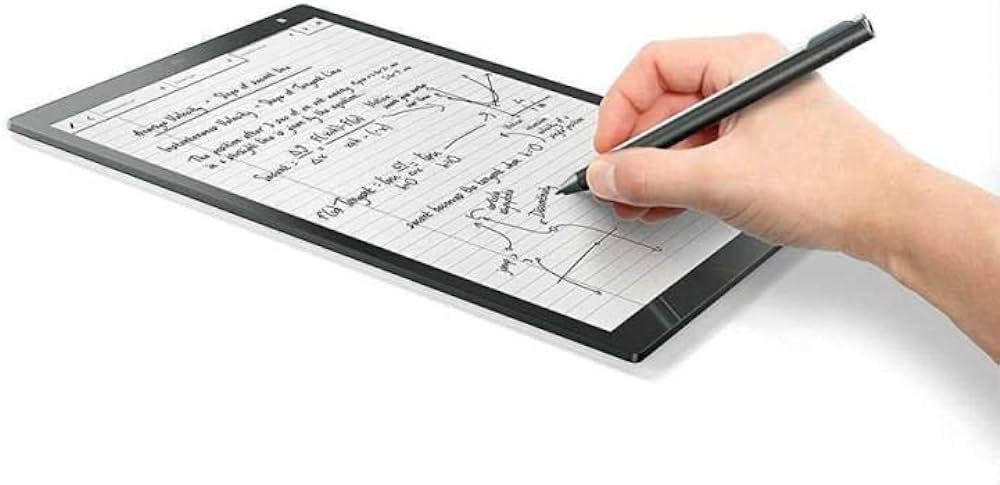E-Ink Everywhere: The Rise of Digital Paper Displays
Originally popularized by e-readers like the Amazon Kindle, E-Ink displays offer a unique blend of readability, low power consumption, and sunlight visibility.

Introduction to E-Ink Technology

Electronic Ink, commonly known as E-Ink, is a revolutionary display technology that mimics the appearance of traditional ink on paper. Originally popularized by e-readers like the Amazon Kindle, E-Ink displays offer a unique blend of readability, low power consumption, and sunlight visibility.
Evolution of E-Ink Beyond E-Readers
Smart Labels
One of the earliest expansions of E-Ink technology beyond e-readers was seen in smart labels. These labels are used in various industries, such as retail and logistics, to display dynamic information like prices, product details, and shipping labels.
Electronic Shelf Labels (ESLs)
ESLs have gained traction in retail environments as a way to automate and update pricing information in real-time. Retailers can easily change prices without the need for manual adjustments, leading to improved efficiency and accuracy.
E-Ink Smartphones
Some smartphone manufacturers have experimented with integrating E-Ink displays into their devices. These secondary displays provide users with always-on information, such as notifications, time, and weather updates, while consuming minimal power.
Applications in Home and Office Settings
Digital Sticky Notes
E-Ink-based digital sticky notes offer a modern alternative to traditional paper notes. Users can write, erase, and rearrange notes effortlessly, reducing paper waste and clutter.
Smart Mirrors
Smart mirrors equipped with E-Ink displays have gained popularity in homes and retail spaces. These mirrors can display customizable information such as weather forecasts, daily reminders, and fitness metrics.
Electronic Whiteboards
E-Ink electronic whiteboards provide a digital canvas for brainstorming, collaboration, and presentations. Unlike traditional whiteboards, these devices offer glare-free viewing and long battery life.
Large-Scale Implementations
E-Ink Traffic Signs
Cities around the world are exploring the use of E-Ink technology for dynamic traffic signs. These signs can adapt to changing traffic conditions, display real-time information, and improve road safety.
E-Ink Architectural Features
Architects and designers are incorporating E-Ink displays into building facades and interior spaces. These displays can showcase artwork, advertisements, and interactive installations, transforming static surfaces into dynamic visual experiences.
Advantages of E-Ink Displays
E-Ink displays offer several advantages over traditional LCD and OLED screens.
Energy Efficiency
E-Ink displays consume minimal power, making them ideal for battery-powered devices like e-readers and smartphones.
Sunlight Visibility
E-Ink displays are highly readable in direct sunlight, making them suitable for outdoor signage and portable devices used in bright environments.
Durability
E-Ink displays are robust and resistant to damage from scratches, drops, and extreme temperatures, making them suitable for rugged applications.
Challenges and Limitations
While E-Ink technology has many benefits, it also has some limitations that need to be addressed.
Refresh Rate
E-Ink displays have a slower refresh rate compared to LCD and OLED screens, which can result in ghosting and motion blur in fast-paced content.
Color Reproduction
Traditional E-Ink displays are limited to grayscale, making them unsuitable for applications requiring vibrant color reproduction.
Future Outlook and Potential Innovations
Despite these challenges, ongoing research and development efforts aim to overcome limitations and unlock new possibilities for E-Ink technology.
Flexible Displays
Researchers are exploring the development of flexible E-Ink displays that can be bent, rolled, and folded, opening up opportunities for wearable devices and innovative form factors.
Advanced Color Capabilities
Advancements in color E-Ink technology could enable the creation of displays with improved color reproduction, expanding the range of applications beyond grayscale content.
Conclusion
In conclusion, the widespread adoption of E-Ink technology beyond e-readers reflects its versatility and potential to transform various industries. From smart labels to large-scale architectural features, E-Ink displays offer a compelling combination of readability, energy efficiency, and durability. While challenges such as refresh rate and color reproduction remain, ongoing innovation holds promise for the future of digital paper displays.
FAQs
- Are E-Ink displays suitable for outdoor use?
- Yes, E-Ink displays are highly readable in direct sunlight, making them ideal for outdoor signage and portable devices.
- Can E-Ink displays show color images?
- Traditional E-Ink displays are limited to grayscale, but advancements in color E-Ink technology are underway.
- What are the advantages of E-Ink displays over traditional LCD screens?
- E-Ink displays offer superior energy efficiency, sunlight visibility, and durability compared to traditional LCD screens.
- Do E-Ink displays have a slow refresh rate?
- Yes, E-Ink displays have a slower refresh rate compared to LCD and OLED screens, which can result in ghosting in fast-paced content.
- What are some potential future innovations for E-Ink technology?
- Future innovations could include flexible displays and advanced color capabilities, expanding the range of applications for E-Ink technology.